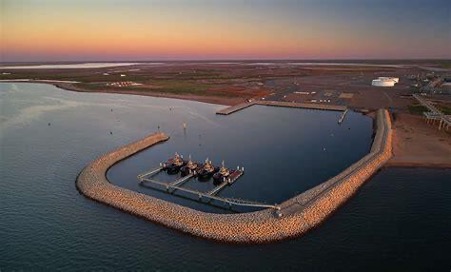Next Pilbara iron ore miner Strike Resources lowering costs in bid to speed Paulsens East to market

Pic: Schroptschop / E+ via Getty Images
Strike Resources will significantly reduce the cost of bringing its Paulsens East iron ore project into production with a staged ramp-up focused on generating revenue in early 2022.
Strike Resources (ASX:SRK) has been working to become the next Pilbara iron ore miner in the middle of what is a strong market for the steelmaking commodity.
A final investment decision is drawing near, with a new approach involving a two-stage production ramp-up being plotted to allow Strike to complete the mine with early cashflows from its first year of production.
Strike is targeting production of 1.5 Mtpa – 2.0 Mtpa for a 4 year mine life, at an initial capital cost of only $5 million.
The miner will first focus on high grade areas close to surface and export up to 400,000 tonnes of Paulsens East product to market via the Utah Point facility for junior miners, around a 600km trip from mine to port.
Strike then plans to scale up production and switch to exporting through the closer Port of Ashburton near Onslow, once environmental approvals are received.
This product is set to be around 75% lump grading 62%, a product that gains a notable premium over the benchmark 62% fines price and 25% fines grading an average of 59%.
“Strike has revised its mining ramp-up plan for Paulsens East, to minimise up-front capital costs and accelerate the commencement of production,” managing director William Johnson said.
“This new plan provides for production growth during CY2022 to be potentially funded from early-sales cashflow, reducing the need for dilutive capital raisings.
“A Final Investment Decision by the company on the project is expected shortly.”
Strike eyeing shorter haulage route
Despite a dip in the iron ore price in recent weeks from record levels seen in the middle of the year, prices remain historically high around the US$130/t mark.
By comparison, Strike expects to have its life of mine C1 FOB cash costs at Paulsens East of just US$63-69 per tonne.
Strike is in talks with the Pilbara Port Authority about using the Port of Ashburton, 12km south of Onslow, to ship its product to Asia.
While accessing the berth at Utah Point will provide speed to market, Ashburton, primarily an LNG terminal for Chevron’s Wheatstone project, will cut 365km off Strike’s haulage route.

PPA has confirmed the use of the Port of Ashburton for export of iron ore by Strike subject to environmental permitting requirements and port operation approvals being obtained by Strike, which are currently underway.
Strike has already lodged a miscellaneous licence application with the Department of Mines, Industry Regulation and Safety for an area near the Port of Ashburton to be used as a staging area for iron ore stockpiles prior to ship loading.
Along with the selection of Ashburton as its proposed port for the Stage 2 ramp up, Strike is also eyeing the potential to increase its maximum run rate by the end of 2022 from 1.5Mtpa to 2Mtpa.
That would help Strike leverage off the JORC resource of 9.6Mt at 61.1% Fe, 6.0% SiO2, 3.6% Al2O3, 0.08% P in the Paulsens East iron ore ridge via conventional open pit mining, with mining approval granted by DMIRS last month.
Strike is already an iron ore exporter, having waved off one shipment and contracted a second from its ultra-high grade Apruimac lump DSO project in Peru.
The company plans to ship around 250,000t from the Port of Pisco a year, with its 15,000t October shipment heading to a South American customer which will cut its shipping times by 80% compared to a shipment to China.
This article was developed in collaboration with Strike Resources, a Stockhead advertiser at the time of publishing.
This article does not constitute financial product advice. You should consider obtaining independent advice before making any financial decisions.
Related Topics
UNLOCK INSIGHTS
Discover the untold stories of emerging ASX stocks.
Daily news and expert analysis, it's free to subscribe.
By proceeding, you confirm you understand that we handle personal information in accordance with our Privacy Policy.








